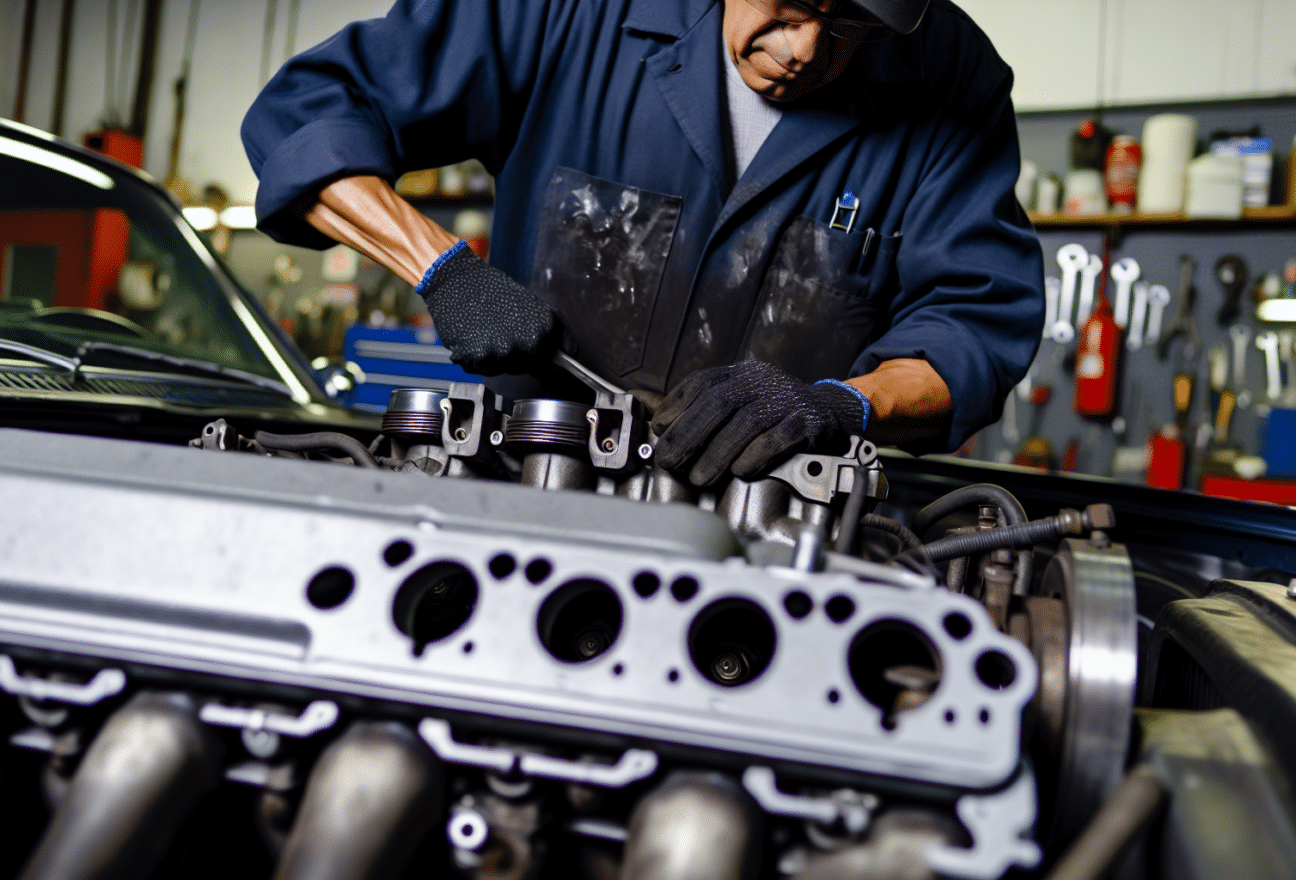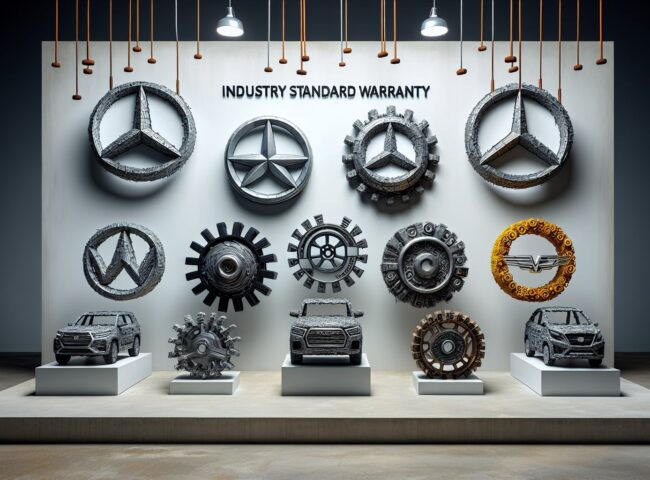When it comes to understanding auto warranties, you’re likely seeking a clear-cut answer to ‘what does an auto warranty cover.’ Generally, an auto warranty covers a range of vehicle repairs and malfunctions, focusing on major components like the engine and transmission, as well as including helpful services such as roadside assistance. This article will outline the essential aspects of warranty coverage, striking a balance between in-depth understanding and practical guidance.
Key Takeaways
- Auto warranties are contracts that cover repair or replacement of defective vehicle components within a certain timeframe, and can include both manufacturer warranties (for new or used cars) and extended warranties (after manufacturer coverage ends).
- Auto warranty coverage typically includes major vehicle components such as the engine, transmission, and major electrical systems, but usually excludes routine maintenance, wear and tear items, and aftermarket parts which could void the coverage.
- Understanding the duration and mileage limits of warranties is crucial, as they vary (e.g., manufacturer warranties often last for three years or 36,000 miles, while extended warranties can go beyond that), and starting from the vehicle’s initial sale date, not the model year.
The Basics of Auto Warranties
An auto warranty is more than just a document; it’s a promise. A promise that if something goes wrong with your vehicle within a specified timeframe after purchase, you’re not alone in dealing with the costs. This agreement, made by the manufacturer or seller, ensures that they will repair or replace defective components or offer mechanical assistance for a specified period after the purchase. This could save you a significant amount of money on expensive future repairs. Both new and used cars can have warranties, and the terms and conditions may vary based on the vehicle and the warranty provider.
There are two main types of auto warranties: manufacturer’s warranties and extended warranties. Each comes with its own set of terms, conditions, and benefits. Let’s delve deeper into these.
Manufacturer’s Warranty
A new or used car purchase typically includes a manufacturer’s car warranty. This warranty, part of your car purchase, safeguards against certain repairs and malfunctions for a stipulated period, generally three years or 36,000 miles. Referred to as a bumper-to-bumper warranty, this comprehensive coverage applies to most parts of your vehicle. However, the extent of coverage might differ based on the ownership; for example, some manufacturers restrict their powertrain warranties to the first owner.
Occasionally, a manufacturer may uphold a ‘secret warranty’ for specific defects that appear after the manufacturer’s warranty expires, predominantly as a sign of goodwill.
Extended Warranty
A vehicle service contract, also known as an extended warranty, becomes effective once the manufacturer’s warranty lapses. It serves as a safety net, providing protection from unexpected or costly repairs, offering similar coverage to the original manufacturer’s warranty. If you want peace of mind and the potential of free repairs after the original warranty period, considering an auto service contract, which is essentially an extended warranty and a service contract lasts longer, is worth it.
An extended warranty goes beyond covering repair or replacement costs; it also encompasses supplementary services like roadside assistance, which includes towing, gas delivery, flat tire assistance, dead battery service, and trip interruption protection. Thus, an extended warranty covers the repair and replacement costs for electrical and mechanical components after the manufacturer’s warranty has expired.
Key Components Covered by Auto Warranties

Having discussed the two primary types of auto warranties, it’s time to explore what these warranties generally cover. Auto warranties usually offer coverage for:
- the engine
- the transmission
- major electrical systems
- the gaskets
- the axles
- the driveshaft
- the wheels
These components are essential parts of the powertrain and drivetrain systems.
The coverage can range from comprehensive warranties that cover many aspects of the vehicle to specific warranties like corrosion warranties that protect against rust penetration.
Engine Coverage
As the heart of your vehicle, the engine’s protection forms a crucial part of auto warranties. These warranties typically include the repair or replacement of major engine components, such as:
- the crankshaft
- pistons
- timing chain
- timing belt
- engine mounts
- seals and gaskets
These components are usually included in the engine coverage offered by auto warranties.
Transmission Coverage
Given the pivotal role the transmission plays in vehicle operation, its coverage stands as an integral part of auto warranties. Typically, this coverage includes:
- The transmission itself
- Transmission mounts
- Oil pump
- Oil pan gasket
- Powertrain control module (PCM)
Powertrain warranties cover these major vehicle components and may include terms related to deductibles.
Typically, the powertrain limited warranty, including transmission coverage, extends up to 60,000 miles.
Electrical System Coverage
Our vehicles incorporate intricate electrical systems that guarantee seamless and efficient performance. Auto warranties typically cover critical electrical components, like:
- the vehicle’s powertrain control module (PCM), which is central to proper vehicle functioning
- integral wiring
- connectors
- sensors essential to the vehicle’s powertrain
This coverage often extends to integral wiring, connectors, and sensors essential to the vehicle’s powertrain.
Additional electrical components covered by auto warranties can include:
- The battery
- The alternator
- The solenoid
- The navigation system
- The windshield wiper motors
- The ignition switch
What Auto Warranties Don’t Cover

Despite auto warranties offering extensive coverage for numerous vehicle parts, they usually exclude certain elements. These exceptions often encompass routine maintenance tasks like regular brake pad replacements and other maintenance activities. Wear and tear items, including tires, brakes, and wipers, are not typically covered under auto warranties.
Moreover, typically, aftermarket modifications or the installation of non-OEM parts might either nullify the auto warranty or fall outside its coverage. Understanding these exclusions can help you make informed decisions about vehicle upkeep and aftermarket modifications.
Routine Maintenance
Routine maintenance tasks that are essential for the longevity and smooth operation of your vehicle include:
- Oil changes
- Tire rotations
- Brake pad replacements
- Fluid checks and replacements
- Air filter replacements
- Battery checks and replacements
However, it’s important to note that these tasks are generally not covered by auto warranties, as they are considered regular upkeep.
Wear and Tear
Wear and tear items are those components of your vehicle that naturally deteriorate over time due to regular use. These include items such as:
- brake pads
- tires
- windshield wipers
- clutches
While these items are critical for the vehicle’s operation, their maintenance and replacement are usually the car owner’s responsibility, as they are often excluded from extended warranties.
Aftermarket Parts
While aftermarket modifications or non-OEM parts can enhance the look, performance, or functionality of your vehicle, they can also lead to complications with your warranty coverage. Auto warranties often exclude coverage for aftermarket modifications or non-original equipment manufacturer (OEM) parts. This is because these modifications can alter the performance or safety of the vehicle in ways not accounted for by the manufacturer’s original design, leading to potential exclusions from warranty coverage.
Duration and Mileage Limits of Auto Warranties

Just like coverage specifics, auto warranties also impose limits on time and mileage. Manufacturer warranties typically last up to three years or 36,000 miles, while extended car warranty and extended warranties can last much longer, such as seven years or 100,000 miles. Mileage limits, similar to time durations, play a crucial role in determining whether a warranty is still valid.
Always remember, the warranty period starts from the original date the car was sold to a customer, not from its model year.
Time Limits
Time limits for warranties can vary significantly based on the type of warranty and the provider. For instance:
- New cars typically come with a three-year or 36,000-mile manufacturer’s warranty.
- A powertrain limited warranty usually lasts for five years or up to 60,000 miles.
- Extended warranties or certified used car warranties that are transferable may extend the coverage, although verification through a dealer using the VIN may be required.
Mileage Caps
Just as there are time limits, there are also mileage caps on auto warranties. These caps determine when warranty coverage expires based on the vehicle’s mileage.
So, while considering an auto warranty, pay attention to these mileage caps as they could significantly influence your coverage period and benefits.
Choosing the Right Auto Warranty

Selecting the appropriate auto warranty necessitates careful consideration. It involves assessing your vehicle’s reliability, comparing warranty providers, and considering factors like coverage, budget, and plans for the car. It’s about finding the right balance between what you need and what you can afford.
Assess Your Vehicle’s Reliability
To evaluate your vehicle’s reliability, it’s advisable to:
- Examine consumer reports, historical data, and recurring issues associated with your vehicle.
- Identify the frequency and cost of repairs for your vehicle.
- Look for common issues reported by other owners.
- Consider factors like the manufacturer’s design and the materials used in vehicle components and systems.
These steps can provide a clear picture of what to expect in terms of potential expensive repairs and the necessity of an extended warranty.
Compare Warranty Providers
Conducting a comparative study of warranty providers plays a key role in selecting the apt auto warranty. You should evaluate factors like:
- coverage
- transferability
- cost
- customer service reputation
Make sure to verify the provider’s network of approved repair facilities. Also, consider the ease of making a claim, which involves assessing whether you can choose your own repair shop or must use one within the provider’s network.
Reading reviews and checking ratings on consumer advocacy websites can also provide valuable insights.
How to Make a Claim Under an Auto Warranty
Despite extensive discussions about warranties, the true test arises when a claim needs to be made. The process often involves identifying a covered issue, contacting the warranty provider, and getting repairs authorized at an approved repair facility.
For a hassle-free claim process, it’s crucial to comprehend your warranty terms and retain service receipts.
Identifying a Covered Issue
The first step in making a claim under an auto warranty is identifying a covered issue. This involves reviewing the warranty documentation to understand the components and issues covered by the auto warranty. You need to examine the vehicle’s symptoms and compare them against the list of covered components in the warranty policy.
Also, check the warranty terms for any exclusions or limitations that could affect whether the issue falls under the warranty coverage.
Contacting the Warranty Provider
Once you’ve identified a covered issue, the next step is to contact the warranty provider. You can find their contact information in the warranty documentation or on the provider’s website. Gather relevant vehicle information, such as:
- make
- model
- year
- VIN
- description of the issue
- any diagnostic codes if available
before contacting the provider.
To initiate the claim process, call the warranty provider’s customer service or claims department and provide all the necessary vehicle and issue information.
Getting Repairs Authorized
After contacting the warranty provider, the next step is to get the repairs authorized. Check whether the auto warranty mandates repairs to be done at a specific dealership or allows for any ASE Certified repair shop. Ensure the repair shop is authorized by the warranty provider to handle covered repairs.
It’s crucial that the authorized repair shop communicates with the warranty provider to obtain official authorization before commencing repairs. You may need to adhere to the warranty provider’s specific authorization process, which may necessitate the submission of maintenance logs and receipts as proof of proper vehicle maintenance.
Summary
We’ve journeyed through the realm of auto warranties, uncovering their types, what they cover, and what they don’t. We’ve learned that manufacturer warranties come with new cars and cover repairs for a specified period, while extended warranties provide coverage for unexpected repairs after the manufacturer’s warranty expires. Key components like the engine, transmission, and electrical systems are typically covered, while routine maintenance, wear and tear items, and aftermarket parts are usually not. Time and mileage limits apply, and choosing the right warranty involves assessing your vehicle’s reliability and comparing warranty providers.
Armed with this knowledge, you’re now better equipped to navigate the world of auto warranties. Whether it’s deciphering the terms of your current warranty, considering an extended warranty, or making a claim, you have the information you need to make informed decisions. Auto warranties can be a lifeline in times of unexpected repairs, offering peace of mind and financial protection. So, take charge, understand your warranty, and drive with confidence.
Frequently Asked Questions
What does a car warranty cover you for?
A car warranty can cover most of the components inside your vehicle, including the engine, electronics, air conditioning systems, and transmission. It also fills in coverage for types of damage not usually covered by insurance, such as normal wear and tear.
What parts are not covered in warranty?
Warranties typically do not cover routine maintenance like oil changes, nor do they cover parts such as tires, brake pads, wiper blades, and light bulbs, which degrade due to normal wear and tear. So, make sure to check these exclusions before expecting coverage for these items.
What is a manufacturer’s warranty?
A manufacturer’s warranty covers specific repairs and malfunctions for a set period, usually around three years or 36,000 miles.
What is an extended warranty?
An extended warranty provides protection from unexpected repairs once the manufacturer’s warranty expires, offering similar coverage to the original warranty and additional services like towing and roadside assistance.
How do I make a claim under an auto warranty?
To make a claim under an auto warranty, you need to identify a covered issue, contact the warranty provider, and get repairs authorized at an approved repair facility. It’s important to understand your warranty terms and keep service receipts.





